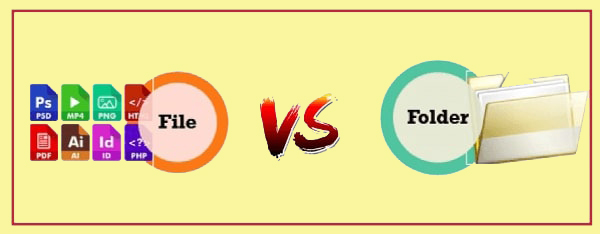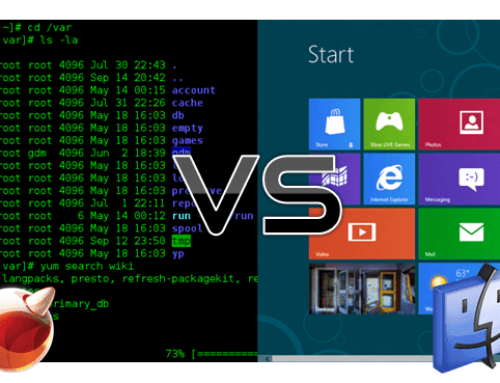Definition of file
“A file is a storage unit where relative data is stored. A file can be an image, video, executable file, system file or application file.”
Files can be stored in secondary devices e.g. hard drive, flash drive, SSD drive, DVD etc. A file can have any size depending upon the storage device on which it is stored.
You can save file with a file name and an extension. Some of common files extensions are .txt, .mp3, .pdf, .zip, .xml, .doc, .mp4 etc.

Definition of folder
“A folder contains other files or subfolders. A folder can also be empty or filled with files and folders.”
You can save the folder with the folder name.
The folder is also named a directory. If you see your desktop on windows then all the files and folders on the desktop are stored in the desktop folder.
File vs folder
Some of the differences between file and folder are:-
| File | Folder |
|---|---|
| The file takes up space in RAM. | The folder cannot take space in RAM. |
| A file cannot contain other files. | A folder can contain other folders. |
| A file is a collection of similar data e.g. .txt file contain text data, .jpg file contains image data. | A folder is a group of different files and folders. |
| You can perform different operations of files e.g. print, email, save, modify, rename and open. | You can perform different operations on folders e.g. rename, delete, move, and share. |
| Files have an extension e.g. .jpg, .exe, .pdf. The extensions tell about the type of program in which the file is opened. | Folders cannot have extensions. |
| A file cannot be shared on the network. | The folder can be shared in the network. |
| You cannot create files and folders within a file. | You can create files and folders within a folder. |
| Files use different indexing e.g. serial, direct access, sequential or indexed sequential. | In the folder, indexing depends on files and subfolders that it contains. |
| You can copy data from one file to another. | You can copy files from one folder to another. |



